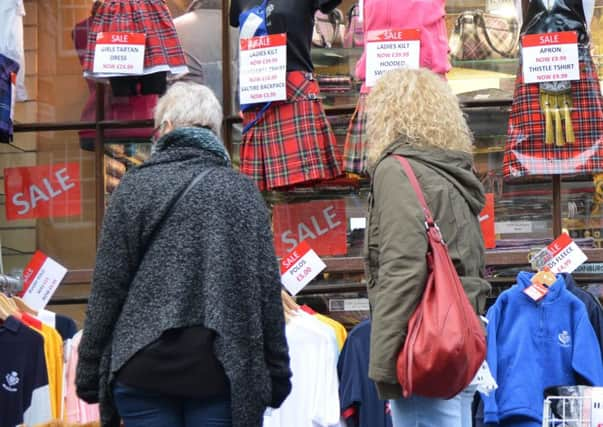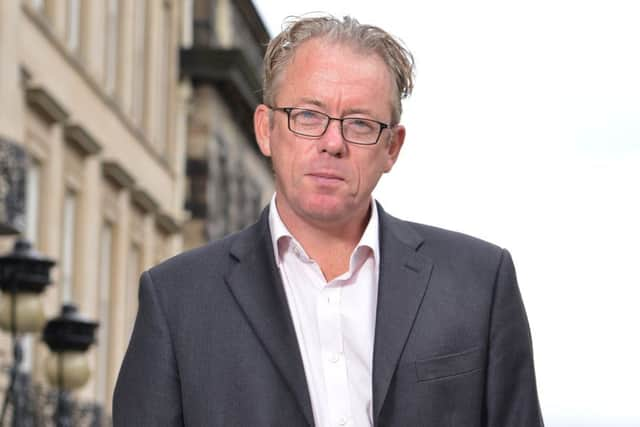Kevin Buckle: Tourism '˜experts' should try life at the sharp end


Don’t get me wrong – the point they make is perfectly valid in that Edinburgh’s population is almost twice that of Venice while it only receives four million visitors compared to Venice’s 20 million. However, what really matters is how things are on the ground and I suspect neither neither Mr Donnelly (pictured right) nor Mr Worsnop spends their days in central Edinburgh actually dealing with tourists.
One thing I’m sure they will be aware of is the image tourists are given and that is overwhelmingly of tartan tat. I have been based in Cockburn Street, the Grassmarket and the Tron Church and one comment that is often made from those offering any criticism is that they expected Edinburgh to be a bit classier.
Advertisement
Hide AdAdvertisement
Hide AdThis does not just extend to tartan tat I should add, as the Christmas market and attractions have done nothing to enhance Edinburgh’s reputation as a unique city with unique experiences. On the other hand, there is a large element of giving the public what they want. Those souvenir shops aren’t cheap to run but survive they do.


Nothing drove home the need to attract tourists who wanted to support local businesses selling locally-made goods more than when I helped in the opening of the “arts market” at the Tron Kirk. For artists selling their wares it was a fairly relentless flow of people who were happy buying silver rings from the high street stalls that were made in Asia but “designed in Scotland”.
I would from time to time help out on these stalls and there was nothing more depressing than having a Chinese family picking out lovely handmade local jewellery only to have them buy pocket watches which they had been told were made in China! Others selling prints would quickly have to include the castle and Greyfriars Bobby if they were not to lose sales.
Those looking at the statistics complacently feel visitors are here for the culture but that is often far from the truth. Taking selfies outside a nice-looking historic building does not make somebody a cultural tourist. The number one reason for visiting Edinburgh is because it is a historic city and second is the castle. While the Castle scores 62 per cent as a primary reason for visiting, museums score only 27 per cent, but of course the National Museum of Scotland is more popular than the Castle.
Advertisement
Hide AdAdvertisement
Hide AdThis is where the anomaly lies. Visitors come for the castle but while here may very well pop into a museum or gallery, especially as they are free. The key point here is that when measuring the success of attracting people to Edinburgh the primary reason is the key figure not the visitor numbers.


That top score of 77 per cent of visitors coming to see a historic city is great for visitors as that experience is mostly free but is not good for business. In the Tron there was a huge problem with people blocking the way as folk took photos of the stained glass windows. They would walk past all the stalls happy with the picture on their phone as a memento.
In my experience of speaking to those involved in bringing visitors to Edinburgh they massively overestimate the cultural side of things. All the figures in official reports are “leisure and culture” which therefore gives no guide, and huge numbers visiting a free museum do not indicate cultural tourism either. On the other hand, the fact that Edinburgh can sustain so many tartan tat shops is direct evidence to the nature of the visitors that are being attracted.
VisitScotland says in the most recent ETAG report that it has recognised five segments to focus on, three of which are most relevant to Edinburgh and one is “food-loving culturalists”. To do so is to immediately not get it. “Foodies” are certainly a target market, as are those interested in arts and culture, but to lump them together like that is both wrong and lazy. It has “I have a marketing degree” stamped all over it!
Advertisement
Hide AdAdvertisement
Hide AdMeanwhile the vintage sector, which is a huge part of other cities’ offering, isn’t mentioned. There was a half-hearted and poorly run campaign a few years ago by the council but that has been it for what is a thriving sector that crosses into many of the “segments” that have been identified. Ironically when speaking to those unimpressed by Edinburgh’s Christmas market top of the list of alternatives is a vintage market which many think would be more in keeping with Edinburgh’s image.
As for the problems of attracting visitors for the first three months of the year, that is a column in itself. When the Grassmarket BID was set up that was a priority. Nobody is claiming it is easy but unsurprisingly the first sign of any event would be to coincide with Easter, which at best might be later in March.
Edinburgh is spoilt with opportunities from Easter to the Festival to Christmas and New Year. The truth is, give marketing people a hard sell and they are lost about what to do.
Edinburgh’s follies in marketing are well documented and none more so than “Incredinburgh” but mostly they are just dull and uninspiring. It is impossible to understand what is needed from reports and statistics and those in charge need to spend a while at the sharp end. “Undercover boss” awaits!
Stats all, folks!
Advertisement
Hide AdAdvertisement
Hide AdSpeaking of statistics, the next round of discussions about the future of the old Royal High School are due to take place at the end of August. I say next round as it is hard to imagine either side accepting defeat just yet, though any finding in favour of the hotel would be a difficult position to come back from for the music school.
As some of you will know, not only are 90 per cent in favour of the old RHS becoming a luxury hotel but 80 per cent are in favour of it becoming a music school, providing yet another reason to pay scant attention to opinion polls.
Slick marketing versus silence has proved a dull battle of wits, but while this may not be the end of the matter hopefully it will be the beginning of the end.